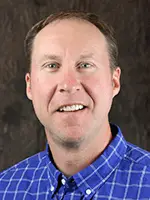
Producer and custom harvester communication areas for a successful harvest
 By Michelle Chang-Der Bedrosian, Ph.D., Vita Plus forage products and dairy technical service specialist and Matt Gabler, Ph.D., Vita Plus regional sales manager
By Michelle Chang-Der Bedrosian, Ph.D., Vita Plus forage products and dairy technical service specialist and Matt Gabler, Ph.D., Vita Plus regional sales manager
When harvesting and storing forage, getting everything right results in better yields and high-quality forages. But stars must align for success.
Producers and custom harvesters control how well the stars align. Teamwork between the two is critical and requires clear and consistent communication. As the forage harvest season approaches, we are highlighting communication areas that are key for success and help your stars align.
 Expectations: Make details and expectations clear. Specifically, ensure clarity on payment, price, schedule and responsibilities. A written contract is always best to communicate these expectations. Now is the time to take a few minutes and make sure all parties involved in harvest know the details.
Expectations: Make details and expectations clear. Specifically, ensure clarity on payment, price, schedule and responsibilities. A written contract is always best to communicate these expectations. Now is the time to take a few minutes and make sure all parties involved in harvest know the details.
Crop conditions: As harvest draws near, the producer must monitor and communicate to the custom harvester the maturity or dry matter content of the crop so that the custom harvester can be there at the right time to get the best-quality forages harvested.
One producer added, “Timeliness, timeliness, timeliness! Keep in contact to know where your custom harvester is in his or her schedule. Do everything in your power to keep your place in line.”
If there is miscommunication about the ideal time to harvest the crop for silage, it could be cut too early or too late. Early cutting means less dry matter, leading to poor fermentation and potentially mold growth. Late cutting reduces digestibility for livestock.
Weather: Providing the custom harvester with local weather events is often overlooked because we assume “if it rained here, it rained everywhere.” Often that isn’t the case; the weather at the farm may be different than the weather at the custom harvester’s home base. Providing the custom harvesters with a warning of weather conditions that may impede harvest can reduce wasted time, energy and money.
Operations: Once the custom harvester is onsite, the need for communication increases. Discuss where the custom harvester should drive, how quickly to harvest so that the pack tractors can keep up with the incoming silage, and who will do each job.
Communicate about communication: Does the custom harvester prefer texts or phone calls? Some custom harvesters don’t hear the phone ring or have time to call back, so a text may be preferred. In contrast, others may not look at phone screens regularly, so a phone call may be preferred.
Targets: Producers want the best forage harvested and stored for their livestock. Custom harvesters aim for the same, resulting in satisfied customers. Proactively communicating about harvest targets – kernel processing score, length of cut, dry matter, inoculants, packing layers, covers, etc. – will go a long way toward success. These targets must all be discussed before the chopper hits the field; no adjustments can be made to benefit the current crop if they’re discussed post-harvest.
Finally, take time to debrief, celebrate and appreciate. Intentional reflection and planning for the next harvest lead to future success. Be mindful of clear and consistent communication as we approach harvest 2024.
| Category: |
Consumer communication Employee management Forage Foundations Forage harvesting |

